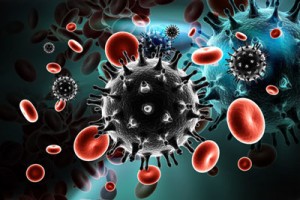Heparin helps in understanding a natural HIV barrier
Posted: 23 March 2015 |
Heparin, a blood thinning agent, is helping researchers at the University of East Anglia (UEA) understand more about the body’s natural barriers to HIV…


A blood thinning agent is helping researchers at the University of East Anglia (UEA) understand more about the body’s natural barriers to HIV (Human Immunodeficiency Virus).


New research reveals how the protein langerin, which is present in genital mucous and acts as a natural HIV barrier during the first stages of contamination, interacts with the drug heparin. The research team has been able to identify two different mechanisms for that interaction – involving different sites or ‘faces’ at the surface of the langerin protein.
Langerin-heparin interactions thought to be important in the degradation of the HIV virus
Lead researcher Dr Jesus Angulo from UEA’s school of Pharmacy said: “Langerin is produced by immune cells which are present in genital mucous. They constitute the first obstacle that the HIV virus finds in its way to infecting someone.
“Heparin is widely used as an anticoagulant agent that prevents the formation of blood clots. But it also occurs naturally in the body with different compositions and surrounds our cells.
“Langerin-heparin interactions are thought to be important in the degradation of the HIV virus. The way that heparin interacts with langerin is important because it is thought to stabilize the formation of granules that facilitates the elimination of HIV particles.
“This is a basic research study providing structural details of a potentially relevant interaction in a known natural barrier to HIV. Yet, of course, it doesn’t mean that taking heparin or other anticoagulant drugs will protect people from HIV.
“The ultimate aim of this line of research is to develop drugs that inhibit the HIV cellular receptors that facilitate infection, without inhibiting, or even better boosting, the activity of langerin.
“This is obviously a long-term goal towards which this research is providing significant initial steps.”
‘Langerin-Heparin Interaction: Two Binding Sites for Small and Large Ligands as revealed by a combination of NMR Spectroscopy and Cross-Linking Mapping Experiments’ is published in the Journal of the American Chemical Society.




